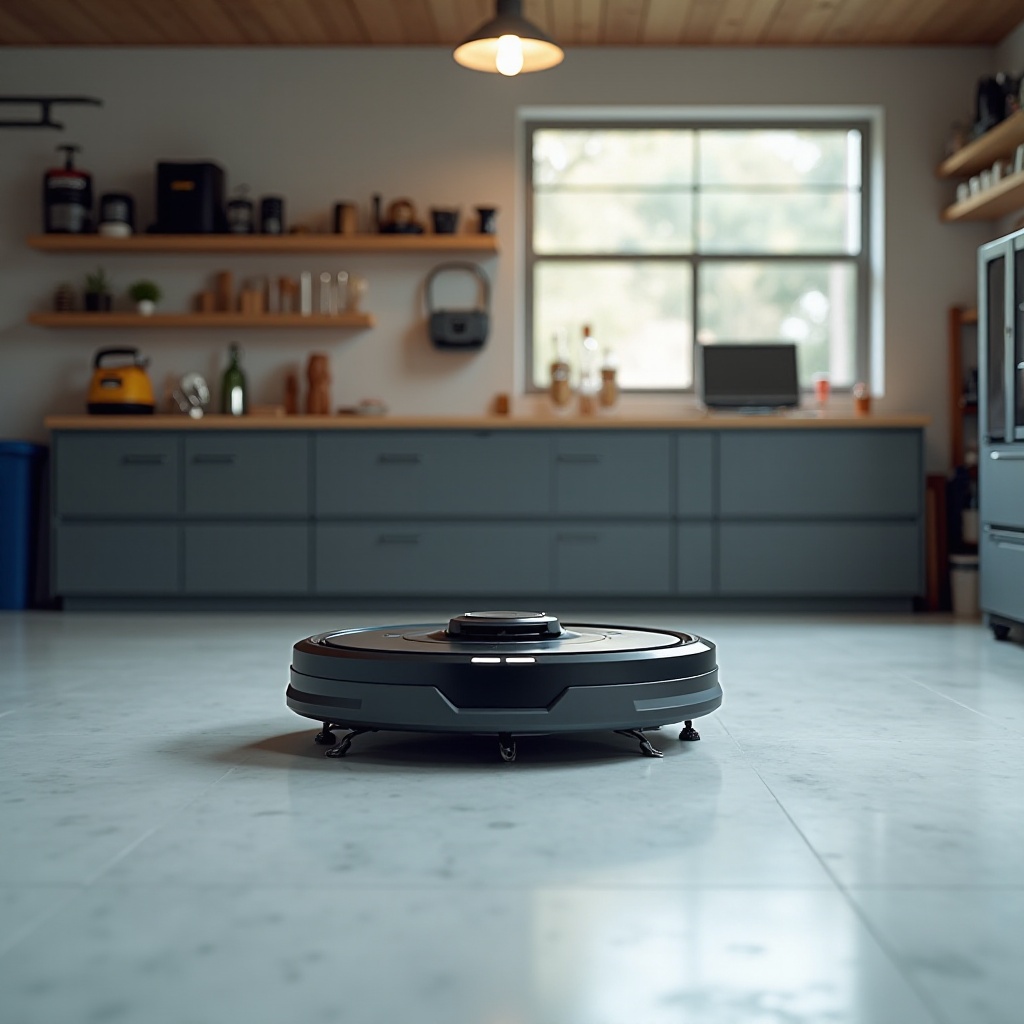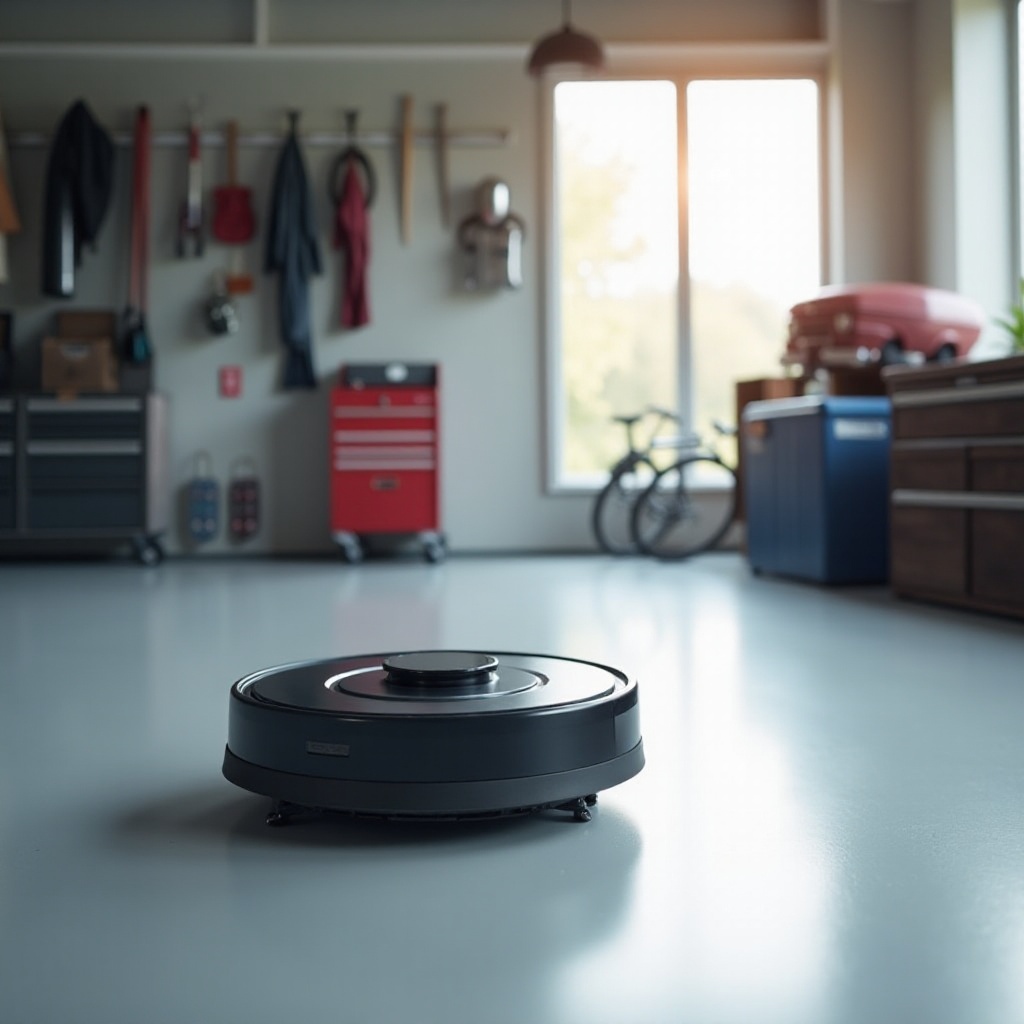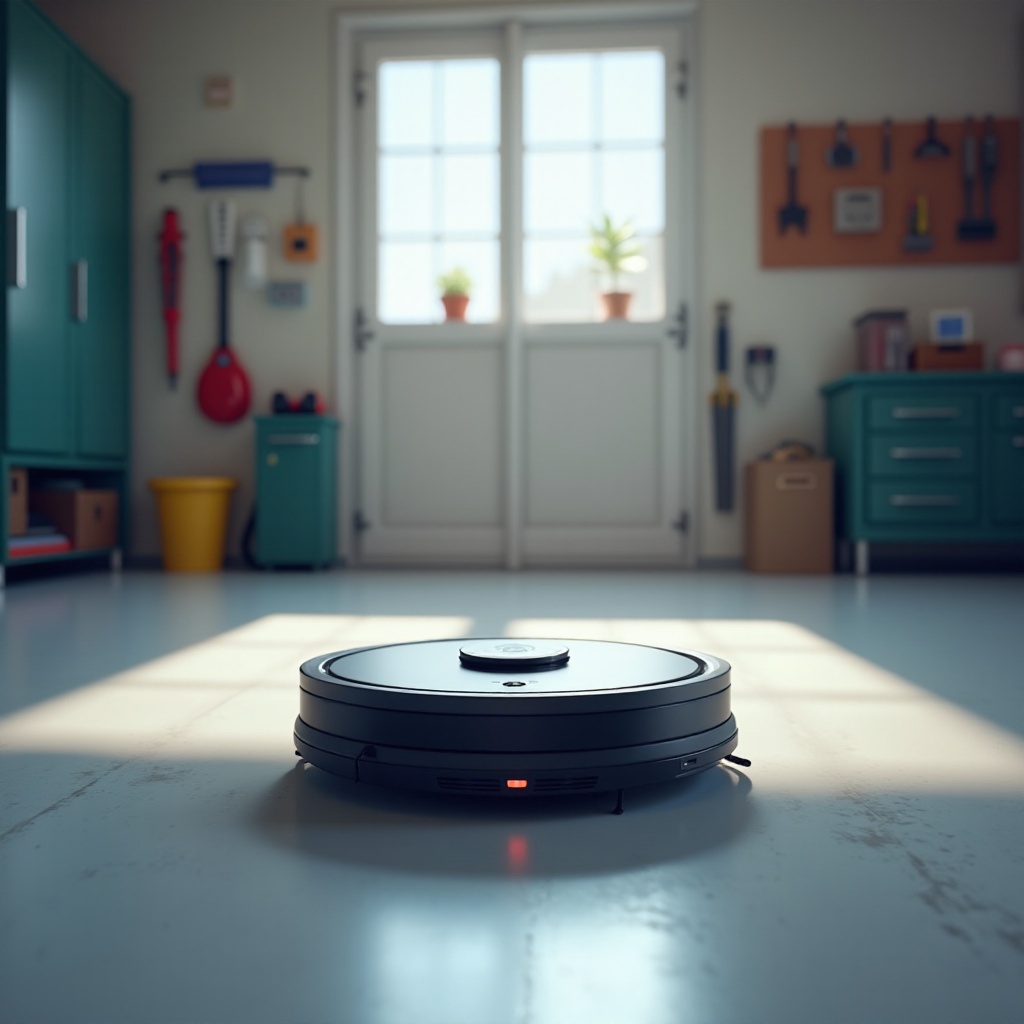Introduction
Finding the best robot vacuum for garage floors can be a daunting task, given the variety of options available. Garage floors are exposed to more dirt, dust, and heavy debris compared to the rest of the house. This guide aims to simplify your search by presenting the top choices that effectively clean garage floors while offering durability, efficiency, and smart features.

Key Features to Look For
When selecting a robot vacuum for your garage, it’s essential to focus on specific features that cater to the unique environment of your garage floors.
Durability and Build Quality
Choose a robot vacuum with robust build quality to withstand rough surfaces and potential collisions with tools or equipment. Durable materials ensure longevity and consistent performance.
Cleaning Mechanism and Brushes
Look for models equipped with strong suction power and versatile brush systems. These features help in thoroughly removing dust, debris, and even small metal particles from the garage floor.
Battery Life and Charging Time
Opt for a robot vacuum with long battery life and short charging time. This ensures uninterrupted cleaning sessions and quick readiness for subsequent uses.
Smart Features (e.g., Navigation, Connectivity)
Advanced navigation features can enhance the cleaning efficiency by mapping the garage layout and avoiding obstacles. Connectivity options like a dedicated app or voice control offer convenient operation and monitoring.

Top 5 Robot Vacuums for Garage Floors
Here are the top five robot vacuums that stand out in terms of performance, durability, and smart features for garage floors:
Vacuum 1: Features, Pros, and Cons
Features:
– Rugged design for heavy-duty use.
– High suction power and specialized brushes.
– Long battery life with fast charging.
– Advanced navigation with connectivity options.
Pros:
– Excellent at picking up heavy debris.
– Durable build ensures long-lasting use.
– Efficient navigation minimizes missed spots.
Cons:
– Relatively pricey.
– May require occasional manual intervention.
Vacuum 2: Features, Pros, and Cons
Features:
– Strong suction and durable construction.
– Multiple cleaning modes and brush types.
– Decent battery life with quick-charge feature.
– Smart-home integration and voice control.
Pros:
– Versatile cleaning on hard surfaces and corners.
– Easy to control via mobile app or voice commands.
– Reliable performance with good coverage.
Cons:
– Slightly noisy.
– Initial setup may be complex for some users.
Vacuum 3: Features, Pros, and Cons
Features:
– All-terrain wheels and sturdy build.
– Efficient cleaning on rough surfaces.
– Moderate battery life with efficient charging.
– Wi-Fi enabled with smart mapping.
Pros:
– Maneuvers well over uneven garage floors.
– Customizable cleaning routines through the app.
– Economical choice for budget-conscious buyers.
Cons:
– Limited battery capacity compared to higher-end models.
– Lacks some premium features seen in competitors.
Vacuum 4: Features, Pros, and Cons
Features:
– Heavy-duty construction for garage usage.
– High-performance brushes for debris removal.
– Extended battery life with short charge time.
– Intelligent navigation and scheduling options.
Pros:
– Handles extensive cleanup tasks effectively.
– User-friendly interface for scheduling clean-ups.
– Great value for performance and price.
Cons:
– Bulky design might struggle in tight spaces.
– Higher maintenance requirement for optimal performance.
Vacuum 5: Features, Pros, and Cons
Features:
– Reinforced exterior for enhanced durability.
– Powerful suction and adaptable brush system.
– Superior battery performance and recharge speed.
– Cutting-edge navigation system with mobile connectivity.
Pros:
– Excels in heavy-duty cleaning environments.
– Smooth and thorough navigation.
– High-tech features for a hands-free experience.
Cons:
– Premium price range.
– Requires regular firmware updates for best performance.
How to Maintain Your Robot Vacuum
Keeping your robot vacuum in peak condition ensures it remains efficient in cleaning your garage.
Regular Cleaning and Maintenance Tips
- Daily: Empty the dustbin and clean the brushes after each use.
- Weekly: Check the wheels and sensors for debris and clean them.
- Monthly: Inspect the filters and brushes for wear and replace them if needed.
Replacing Parts and Accessories
- Replace brushes and filters every 3-6 months, depending on usage.
- Ensure availability of compatible parts and accessories for your specific vacuum model.
Troubleshooting Common Issues
- Connectivity problems: Restart the device and your router.
- Reduced suction power: Check for clogs in the brush or filter.
- Navigation errors: Clean the sensors and ensure there are no reflective surfaces affecting the infrared signals.

Conclusion
Selecting the best robot vacuum for garage floors involves careful consideration of durability, cleaning capabilities, battery life, and smart features. The vacuums listed in this guide are excellent choices that meet the unique demands of garage floor cleaning, ensuring a clean and debris-free environment. Regular maintenance and proper handling will extend the lifespan and efficiency of your robot vacuum, optimizing your investment.
Frequently Asked Questions
Can a regular robot vacuum be used for garage floors?
While regular robot vacuums can clean garage floors, it is recommended to use models designed for heavy-duty cleaning due to their enhanced durability and specialized features.
How often should I clean my robot vacuum?
It is best to clean your robot vacuum after every use for optimal performance, including emptying the dustbin and wiping down the brushes.
What is the average lifespan of a robot vacuum?
The average lifespan of a robot vacuum is around 3-5 years, depending on usage frequency and maintenance.
